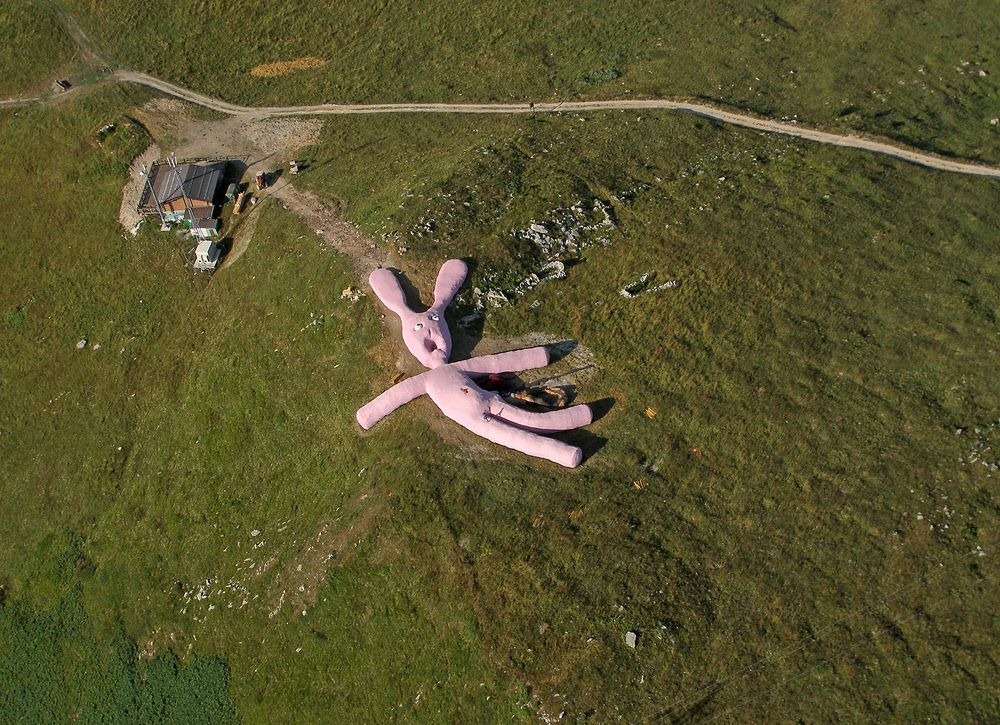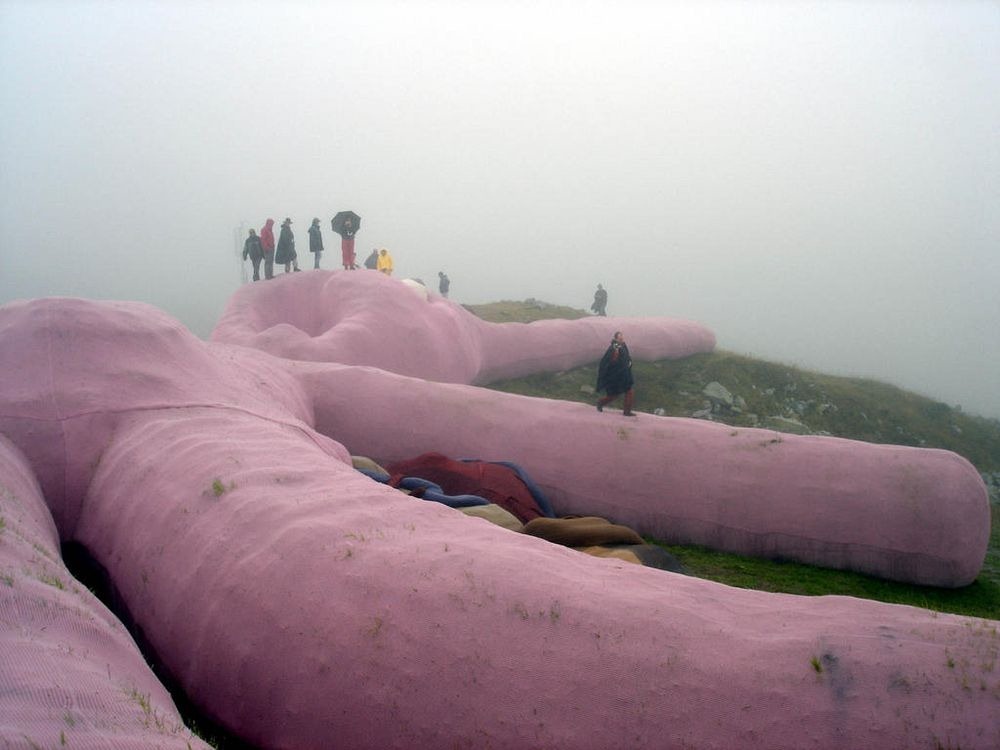The Giant Pink Bunny in the Middle of Nowhere
The Italian village of Frabosa Sottana is located in the northwestern part of the country, in the foothills of the Alps. It’s a small, nondescript municipality — it’s Wikipedia entry notes that its “economy is based on winter tourism” tied to a local ski resort, and says little otherwise. That shouldn’t be a surprise; Frabosa Sottana is home to only about 1,500 people, with a density of only about 100 people per square mile (40/km2).
And one day, the residents woke up to find the creature, below, lying dead on the hill of that local ski resort.

Yep — it’s a giant pink bunny. The creature was 200 feet long and 20 feet high, which is to say, it was huge. Here’s a picture of some people climbing on it, just to give you a sense of how large the thing was.

The giant pink bunny was put there by a Vienna-based art collective called Gelitin, which does all sorts of weird things like this; for example, in 2014, they built a giant nose in an open space in Germany, as seen here. Per the New York Times, the rabbit was “knitted from wool and stuffed with hay” and it “looks cute, all soft and cotton-candy-hued — until one notices that it’s meant to be quite dead.” The rabbit’s face tells most of the story — the look of surprise is intentional — but if you need more evidence, the bunny is suffering obvious damage from its fictional fall from above. The multicolored area just under the rabbit’s left arm? Those are its innards, spewing forth onto the ground. (Don’t worry, they’re also made of wool and hay-stuffed).
The stuffed creation was designed for people to climb on it. The giant pink bunny — officially titled “Hase,” the German word for “hare” — was there to give visitors the happiness felt by a maggot or larva that makes a home in a rotting corpse. Here’s how Gelitiin described the experience on its website:
Happy you feel as you climb up along its ears, almost falling into its cavernous mouth, to the belly-summit and look out over the pink woolen landscape of the rabbitÌs body, a country dropped from the sky; ears and limbs sneaking into the distance; from its side flowing heart, liver and intestines.
Happily in love you step down the decaying corpse, through the wound, now small like a maggot, over woolen kidney and bowel.
Happy you leave like the larva that gets its wings from an innocent carcass at the roadside.
And, true to that mission, Gelitin’s vision for Hase was to just let it sit there until it rotted away. They estimated that would happen around 2025 — but unfortunately for those of you who may want to visit the rabbit, that estimate was wrong. Within a few years, the pink hue faded and became a drab grey, and the woolen covering split to reveal the wire-covered hay inside. According to Atlas Obscura, the bunny was almost entirely gone by 2016. The art exhibit, which was once very visible via the Google Maps satellite view (as seen here), is now gone.
Bonus fact: In 1977, a cartoonist named Matt Groening created a strip called “Life in Hell,” featuring anthropomorphic rabbits. Here’s a one-cell example from 1999, and you probably recognize the artistic style — it looks a lot like The Simpsons, the long-running television show. That’s not a coincidence; Groening is also the creator of The Simpsons. And for a while, he hoped to connect the two universes. Marge Simpson, the mom in the long-running TV show The Simpsons, is best known for her tall, blue hair, and according to Comic Book Resources, Groening considered using that as the basis for a gag. In a set of DVD commentary, per CBR, Groening admitted that the tall hair was supposed be hiding Marge’s rabbit ears: “[M]y plan, back in the very beginning, that she was actually a ‘Life in Hell’ rabbit from my comic strip … but then it just seemed like a … I just said ‘Oh, forget it. There’s no ears under there.'” The reveal, reports CBR, was supposed to happen toward the series finale of The Simpsons, which may never happen anyway.
From the Archives: The Great Virtual Rabbit Massacre of 2017: None were giant pink ones, as far as I can tell.
